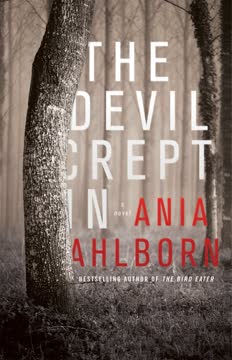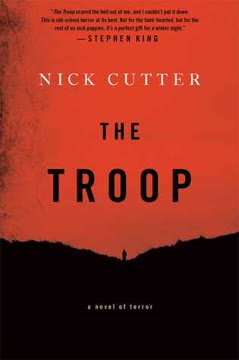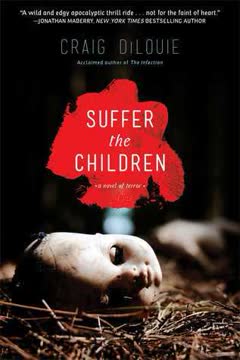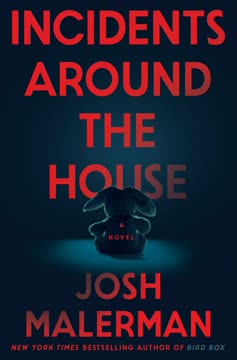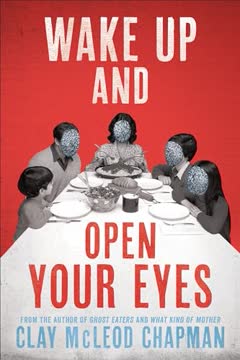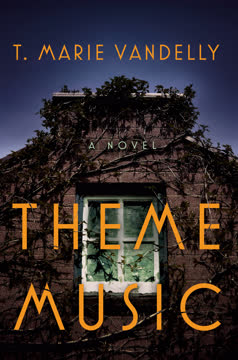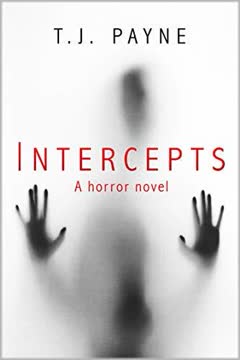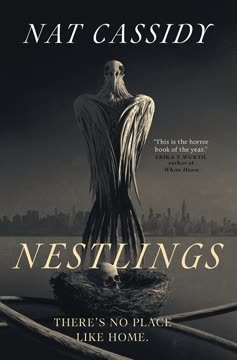Plot Summary
Missing in the Woods
In the small town of Deer Valley, twelve-year-old Jude Brighton disappears after a day spent with his younger cousin, Stevie Clark. The community is shaken, and search parties comb the woods, but Jude is nowhere to be found. Stevie, already an anxious and isolated child, is consumed by worry and guilt, feeling the loss of his only friend and confidant. The disappearance stirs up old wounds in both families, especially for Stevie, whose home life is marred by an abusive stepfather and a mother who seems unable to protect him. The woods, once a place of adventure, now loom as a sinister presence, and the town's collective fear grows as the hours turn into days.
The Town's Dark History
As the search for Jude intensifies, the town's past resurfaces. Years ago, another boy, Max Larsen, vanished in similar circumstances, his body later found mutilated in the woods. The adults avoid discussing the tragedy, but the children know the story well, fueling their nightmares. Stevie's older brother, Dunk, uses the tale to torment him, deepening Stevie's sense of dread. The woods are rumored to be haunted, and the community's unease is palpable. The search party's efforts are half-hearted, colored by the town's suspicion of Jude's troubled reputation and the belief that some children are simply "bad seeds." Stevie, however, refuses to accept these explanations, convinced that something truly evil lurks in the forest.
Stevie's Haunted Mind
Stevie's mental health deteriorates as Jude's absence stretches on. Plagued by nightmares, compulsive rhyming, and hallucinations, he struggles to distinguish reality from imagination. His family's dysfunction—his mother's denial, his stepfather's cruelty, and his brother's indifference—leave him feeling utterly alone. Stevie's only solace is his determination to find Jude, but his efforts are dismissed by adults who see him as unstable. He becomes obsessed with investigation, taking notes and retracing their steps, but every clue seems to lead back to the woods and the mysterious, abandoned house that he and Jude once feared. The line between external horror and Stevie's internal demons blurs, amplifying the story's sense of unease.
The Search and the Sweatshirt
Days into the search, a volunteer finds Jude's distinctive black sweatshirt in the woods, stained with blood. The town's hope dims, and Jude's mother, Amanda, is consumed by grief. Stevie is present when the sweatshirt is found, and the sight haunts him. He is convinced that the adults are missing something crucial, that Jude left the sweatshirt as a clue. The police and townsfolk, however, are quick to assume the worst, and the search loses momentum. Stevie's frustration mounts as he realizes that if Jude is to be found, it will be up to him. The discovery of the sweatshirt marks a turning point, shifting the story from a missing person case to a tale of supernatural dread.
Secrets in the Forest
Determined to find answers, Stevie retraces the boys' last day together, visiting the playground, the hardware store, and finally the woods. He is stalked by stray cats, which seem unnaturally drawn to the area. The abandoned house on the old logging road becomes a focal point of his investigation. Stevie senses a malignant presence there, glimpsing a hunched, pale figure lurking in the shadows. His fear intensifies, but so does his resolve. The cats, the house, and the strange creature all seem connected to Jude's disappearance. Stevie's encounters in the forest blur the line between reality and nightmare, and he begins to suspect that the evil in Deer Valley is not just human.
The House on the Road
The narrative shifts to the history of the house and its reclusive inhabitant, Rosamund Aleksander. Isolated and grieving, Rosie's longing for a child leads to the birth of Otto, a deformed, monstrous boy with a taste for blood. As Otto grows, he preys on animals and, eventually, children. Rosie's maternal love warps into complicity, as she buries the evidence of Otto's crimes in the backyard. The house becomes a place of unspeakable acts, its decay mirroring Rosie's moral collapse. The origin of the evil in the woods is revealed to be both supernatural and tragically human, rooted in loneliness, loss, and the desperate need for connection.
Monsters and Mothers
Rosie's story unfolds in harrowing detail. Her failed attempts at motherhood, the loss of her husband, and her isolation drive her to madness. Otto, born of grief and possibly something darker, is both her child and her captor. He feeds on her, on animals, and eventually on the children who wander too close. Rosie's complicity is born of love and fear; she cannot bring herself to destroy Otto, even as his crimes escalate. The house becomes a prison for both of them, and the woods a hunting ground. The narrative explores the monstrous potential of maternal love, and the ways in which evil can be both inherited and created.
Otto's Origin
Otto's existence is a grotesque answer to Rosie's prayers. His deformities, his insatiable hunger, and his animalistic behavior set him apart from the start. As he grows, he learns to lure and dominate animals, then children. The strays that fill the woods are his thralls, and the town's missing pets are the first sign of his predation. Rosie's attempts to civilize him fail, and her guilt grows with each new grave in the backyard. The story of Otto is one of nature twisted by trauma, of a mother's love turned deadly, and of a community's failure to see the danger in its midst.
The Return of Jude
After weeks of terror, Jude reappears on his mother's porch, filthy and mute. The town celebrates his return, but Stevie immediately senses that something is wrong. Jude is changed—withdrawn, sunburned, and plagued by strange rashes. He avoids Stevie, lashes out unpredictably, and seems to have no memory of his ordeal. The adults attribute his behavior to trauma, but Stevie suspects a deeper, more sinister transformation. The cats continue to gather, and Jude's connection to the house and the creature in the woods becomes increasingly apparent. The miracle of his return is overshadowed by the creeping sense that Jude is no longer himself.
Not the Same Boy
Stevie's attempts to reconnect with Jude are met with hostility and violence. Jude's behavior grows more erratic—he scratches at his skin until it bleeds, bites himself, and displays inhuman strength and agility. He is drawn to the woods and the abandoned house, and his presence seems to attract the strays. Stevie's fear for his friend is matched only by his fear of him. The boys' bond, once unbreakable, is strained to the breaking point as Stevie realizes that Jude may be under the influence of something evil—or may have become something evil himself.
Descent into Madness
As Jude's condition worsens, Stevie's warnings are dismissed by the adults as delusions. The town's collective denial allows the horror to fester. Stevie's own grip on reality slips as he is haunted by visions and memories of violence. The truth about the house, Otto, and Jude's transformation comes to light in a series of terrifying confrontations. The boundaries between victim and monster, innocence and guilt, blur. The story builds to a fever pitch as Stevie is forced to face the evil head-on, risking everything to save his friend—and himself—from the darkness that has crept into their lives.
The Truth Beneath the Stairs
Stevie's investigation leads him back to the house, where he discovers the truth about Otto and Rosie. In the basement, he finds evidence of unspeakable acts—bones, blood, and the remains of the missing. Jude, now fully under the creature's influence, is complicit in the violence. The confrontation is brutal and chaotic, as the lines between human and monster, mother and child, are obliterated. Rosie's final act is one of desperate love and guilt, as she tries to contain the evil she has helped unleash. The house, once a place of hope, becomes a tomb for the secrets it has harbored.
Blood and Betrayal
The climax is a frenzy of bloodshed and betrayal. Jude, no longer himself, attacks his own mother and Stevie. The adults, finally confronted with the horror, are powerless to stop it. Stevie is forced to defend himself, using the hammer that once symbolized his friendship with Jude. The violence is both physical and emotional, as Stevie is forced to destroy the person he loved most in order to survive. The cost of confronting evil is revealed to be unbearably high, and the survivors are left shattered by the experience.
The Final Confrontation
In the aftermath of the violence, the truth is obscured by trauma and denial. The town struggles to make sense of what has happened, and the official story is one of madness and tragedy, not monsters. Stevie is institutionalized, his warnings dismissed as the ravings of a disturbed child. The evil in the woods is neither defeated nor understood; it simply recedes, waiting for another opportunity. The survivors are left to grapple with their guilt, their grief, and the knowledge that some horrors cannot be explained or contained.
Aftermath and Unanswered Questions
The story ends with the town returning to uneasy normalcy. The house is sold, its history forgotten by all but a few. Stevie, now a cautionary tale, is lost to the system. The woods remain, unchanged and indifferent, their secrets buried but not erased. The final chapter hints that the evil persists, waiting for the next child to wander too far, for the next mother to make a desperate wish. The cycle of horror is unbroken, and the devil that crept in is never truly gone.
The Devil Remains
In a chilling epilogue, a new family moves to Deer Valley, and the legend of the monster in the woods becomes just another story to tell around the campfire. But the signs are there—the strays, the missing pets, the uneasy feeling that something is watching from the shadows. The evil that haunted Stevie, Jude, and Rosie is not vanquished, only waiting. The cycle of fear and denial continues, and the devil, once invited in, never truly leaves.
Characters
Stevie Clark
Stevie is a ten-year-old boy marked by trauma, anxiety, and a vivid imagination. Isolated by his stutter, compulsive rhyming, and missing fingers, he is dismissed by adults and bullied by peers. His friendship with Jude is his lifeline, and Jude's disappearance shatters his fragile sense of safety. Stevie's psychological struggles—hallucinations, nightmares, and obsessive investigation—make him an unreliable narrator, blurring the line between reality and delusion. Despite his fears, Stevie is brave and loyal, risking everything to find and save Jude. His journey is one of confronting both external evil and his own inner demons, and his ultimate fate is a tragic testament to the cost of seeing the truth when others refuse.
Jude Brighton
Jude is Stevie's older cousin and only friend, a boy hardened by the loss of his father and the town's suspicion. Known for his anger and defiance, Jude is both protector and tormentor to Stevie. His disappearance and subsequent return are the story's central mysteries. After his ordeal, Jude is changed—withdrawn, violent, and increasingly inhuman. His transformation is both supernatural and symbolic, representing the way trauma and evil can consume even the strongest among us. Jude's relationship with Stevie is the emotional core of the novel, and his ultimate fate is both horrifying and heartbreaking.
Rosamund Aleksander (Rosie)
Rosie is the reclusive woman who lives in the house on the old road. Her longing for a child and the loss of her husband drive her to madness. The birth of Otto, a monstrous and deformed boy, is both a miracle and a curse. Rosie's love for Otto warps into complicity as she enables his predation, burying the evidence of his crimes and isolating herself from the world. Her character is a study in the monstrous potential of maternal love, and her ultimate act of sacrifice is both redemptive and tragic. Rosie embodies the novel's themes of grief, guilt, and the ways in which evil can be both created and inherited.
Otto
Otto is Rosie's son, born of grief and possibly supernatural influence. Deformed, mute, and animalistic, he preys on animals and children, luring them into the woods and the house. Otto is both victim and villain, shaped by his mother's love and the town's neglect. His relationship with Rosie is complex—he is both her child and her captor, the embodiment of her guilt and longing. Otto's existence is the source of the evil in Deer Valley, and his story is a meditation on the nature of monstrosity and the consequences of unchecked desire.
Amanda Brighton (Aunt Mandy)
Amanda is Jude's mother and Stevie's aunt, a woman broken by loss and overwhelmed by her son's disappearance. Her love for Jude is fierce, but she is unable to protect him from the forces that consume him. Amanda's relationship with Stevie is nurturing, offering him the compassion he lacks at home. Her grief and denial mirror the town's collective refusal to confront the truth, and her ultimate fate is a testament to the story's tragic cycle of loss and helplessness.
Nicole Clark (Stevie's Mother)
Nicole is Stevie's mother, struggling to keep her family together in the face of abuse and poverty. Her inability to stand up to her husband or protect her children leaves Stevie vulnerable and isolated. Nicole's denial and avoidance are coping mechanisms, but they also enable the horror to fester. Her love for Stevie is genuine, but she is ultimately powerless to save him from the darkness that surrounds them.
Terry Marks (The Tyrant)
Terry is Stevie's stepfather, a violent and domineering presence in the Clark household. His cruelty and neglect exacerbate Stevie's psychological struggles and contribute to the family's dysfunction. Terry represents the everyday evil that exists alongside the supernatural horror, and his indifference to Jude's disappearance is a stark contrast to Stevie's devotion.
Duncan Clark (Dunk)
Dunk is Stevie's older brother, a high school athlete more interested in his own life than his family's troubles. He alternates between bullying and ignoring Stevie, offering little support or comfort. Dunk's indifference is both a defense mechanism and a symptom of the family's dysfunction. His occasional moments of concern are too little, too late, and his inability to protect Stevie is a source of guilt and regret.
Mr. Greenwood
Mr. Greenwood is the elderly owner of the general store, a figure who seems to know more about the town's dark history than he lets on. He provides Stevie with cryptic clues and serves as a link between the past and present horrors. Mr. Greenwood's knowledge of the missing pets and the woods' evil hints at a deeper understanding of the supernatural forces at work, but his reluctance to intervene reflects the community's broader denial.
Laurie Lewis
Laurie appears in the epilogue as a new resident of Deer Valley, drawn to the town's legends and tragedies. Her investigation into the events of the novel frames the story as an ongoing cycle, suggesting that the evil in the woods is never truly vanquished. Laurie's curiosity and skepticism mirror the reader's own, and her presence hints that the story is far from over.
Plot Devices
Dual Narrative Structure
The novel alternates between Stevie's present-day investigation and the historical backstory of Rosie and Otto. This dual structure allows the reader to piece together the mystery alongside Stevie, while also providing the origin of the evil that haunts Deer Valley. The gradual revelation of Otto's existence and Rosie's complicity builds suspense and deepens the story's emotional impact. The structure also highlights the cyclical nature of horror, as past traumas resurface in the present.
Unreliable Narrator
Stevie's psychological struggles—hallucinations, compulsive rhyming, and trauma—make him an unreliable narrator. The reader is forced to question what is real and what is imagined, heightening the sense of dread and uncertainty. This device also mirrors the town's collective denial, as both Stevie and the community are unable or unwilling to confront the truth. The unreliable narration keeps the reader off-balance, amplifying the horror.
Foreshadowing and Symbolism
The recurring presence of stray cats, missing pets, and the ominous woods serve as symbols of the evil lurking beneath the surface. The cats are both victims and harbingers, drawn to Otto and the house. The woods represent the unknown, a place where innocence is lost and evil thrives. Foreshadowing is used to build tension, with early references to Max Larsen's fate and the town's history hinting at the horrors to come.
Possession and Transformation
The novel explores the idea that evil is not just an external force, but something that can possess and transform individuals. Jude's return and subsequent change are depicted as both supernatural and psychological, blurring the line between victim and monster. The theme of possession extends to Rosie and Otto, as maternal love becomes a vehicle for horror. This device raises questions about agency, responsibility, and the nature of evil.
Community Denial and Complicity
The town's refusal to confront its dark history, its quickness to blame victims, and its dismissal of Stevie's warnings all contribute to the perpetuation of evil. The adults' denial allows the horror to fester, and their complicity is as damning as the supernatural forces at work. This device underscores the novel's critique of small-town insularity and the dangers of ignoring what we fear.
Analysis
The Devil Crept In is a chilling exploration of how horror takes root in the spaces we refuse to examine—our families, our histories, our own minds. Through the intertwined stories of Stevie, Jude, and Rosie, Ania Ahlborn crafts a narrative that is as much about psychological trauma and the failures of community as it is about supernatural evil. The novel's use of unreliable narration, dual timelines, and potent symbolism blurs the boundaries between reality and nightmare, forcing readers to confront the uncomfortable truth that monsters are often made, not born. The story's emotional core is the bond between Stevie and Jude, a friendship tested and ultimately destroyed by forces beyond their control. The adults' denial and the town's complicity allow the horror to flourish, suggesting that evil endures not just because of the monstrous, but because of the ordinary. In the end, the devil that crept in is never truly exorcised—it simply waits for the next opportunity, the next vulnerable soul, the next story to be told. The novel's lesson is a stark warning: what we refuse to see, what we bury and deny, will always return.
Last updated:
Review Summary
The Devil Crept In is a creepy, disturbing horror novel that follows 10-year-old Stevie as he investigates his cousin Jude's disappearance. The story builds slowly but intensifies, featuring graphic violence and supernatural elements. Readers praised Ahlborn's storytelling, character development, and ability to create a chilling atmosphere. Many found the book unputdownable, though some felt the ending left unanswered questions. Overall, it's recommended for horror fans who don't mind gore and enjoy psychological thrills, but it's not for the faint of heart.
